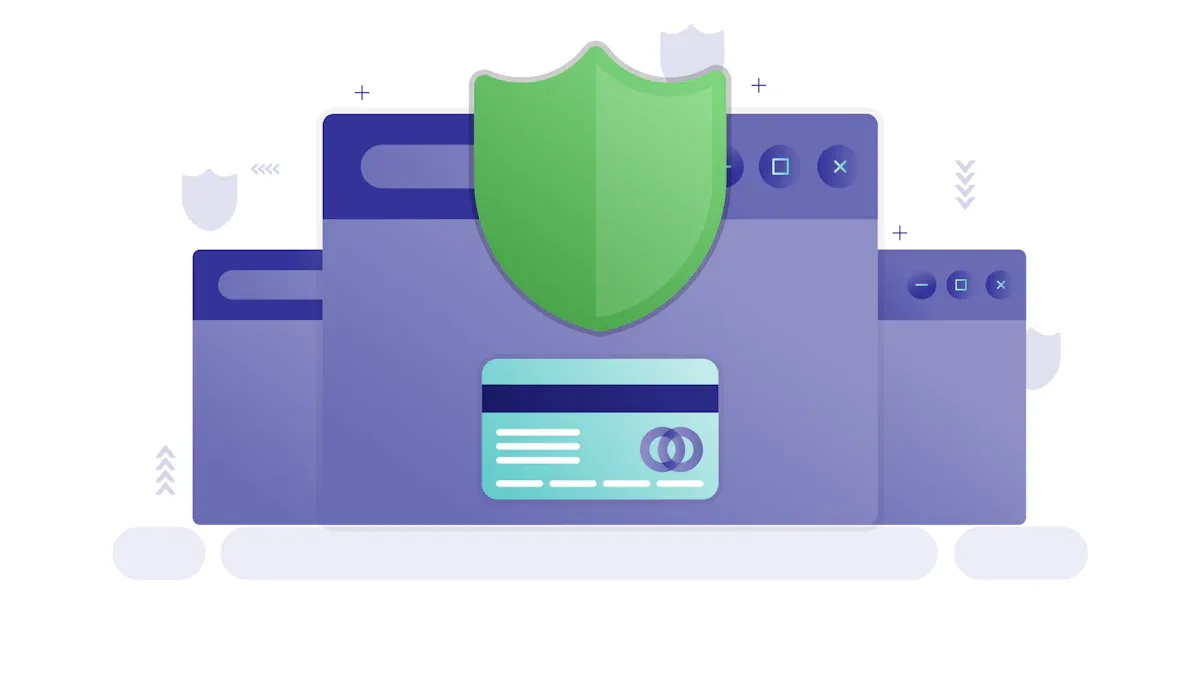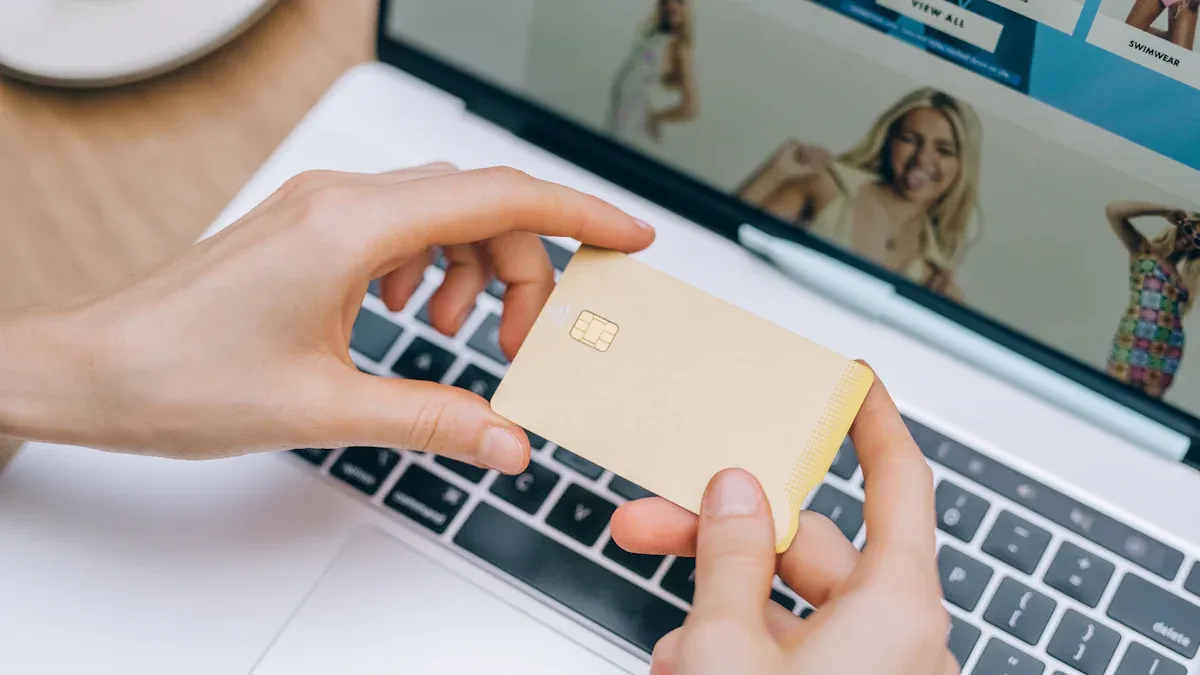- EasyCard
- Trade
- Help
- Announcement
- Academy
- SWIFT Code
- Iban Number
- Referral
- Customer Service
- Blog
- Creator
Is MoneyGram Safe? A Detailed Look at Its Remittance Security and Service Advantages

Image Source: pexels
Is MoneyGram safe? The answer is yes. MoneyGram is an international remittance service provider with a robust security system. Its safety is built on global compliance, advanced technology, and strict risk controls. Its massive operational scale also attests to its reliability:
- The platform processes over $200 billion in transactions annually
- It has served over 150 million people in the past 5 years
The platform employs multiple measures to protect every transaction, and its strong security system is worth exploring in detail.
Key Points
- MoneyGram is a secure international remittance platform. It uses advanced technology and strict rules to protect users’ money.
- MoneyGram safeguards your personal information with encryption technology. It also complies with global financial laws to prevent misuse by bad actors.
- MoneyGram has an intelligent system to detect and prevent fraud. It also strictly verifies your identity to ensure only you can access your account.
- To transfer money safely, use only MoneyGram’s official channels. Don’t trust those who make you feel rushed or ask you to send money to strangers.
- If you enter incorrect information during a transfer, you can modify or cancel it as long as the recipient hasn’t collected the funds. Report fraud immediately to MoneyGram.
Is MoneyGram Safe? Breaking Down Its Multi-Layered Security Framework

Image Source: unsplash
Is MoneyGram safe? The answer lies deeply rooted in its sophisticated multi-layered security framework. The platform builds a strong defense for global users’ funds by combining technology, compliance, and processes. All transaction information is processed entirely electronically, fundamentally reducing risks from manual operations, and through partnerships with industry leaders like Mastercard and Plaid, it further enhances transaction security and reliability.
Advanced Encryption and Data Protection
MoneyGram prioritizes user data security. The platform uses industry-recognized database and network technology to encrypt all consumer data during storage and transmission. This means your personal and financial data are tightly protected from unauthorized access when sent from your device to MoneyGram’s servers, shared internally, or interacted with partners.
MoneyGram has established a robust information security program to ensure its operations comply with international data protection standards. Its comprehensive consumer privacy statement clearly outlines all aspects of data handling.
The platform’s privacy policy covers the following key areas:
- Data Collection and Use: Clearly informs users why and how personal data is collected.
- Data Sharing Policy: Details which third parties (e.g., service providers, regulators) data may be shared with.
- International Data Transfers: Explains protective measures for global data transfers, such as standard contractual clauses.
- Data Retention Period: Determines data retention based on service needs, legal requirements, and business purposes.
- User Rights: Ensures users have the right to access, correct, or delete their personal data.
These measures collectively form a transparent and responsible data protection framework, allowing users to clearly understand how their information is handled.
Global Compliance and Financial Regulation
As a global remittance service provider, MoneyGram operates under a strict financial regulatory framework. The question “Is MoneyGram safe?” largely depends on its compliance. The company is committed to adhering to all applicable laws and regulations in the regions where it operates, particularly strictly following guidelines from the U.S. Department of the Treasury and the Financial Crimes Enforcement Network (FinCEN).
This aims to proactively prevent its services from being used for illegal activities like money laundering, fraud, or terrorist financing. MoneyGram not only complies with regulations itself but also requires its global agents and partners to be familiar with and fulfill anti-money laundering and anti-fraud responsibilities. This firm commitment to compliance makes it a trusted participant in the financial ecosystem, providing robust protection for consumers.
Intelligent Fraud Detection System
MoneyGram’s security system is not static; it features a dynamic intelligent fraud detection system. This system is a core component of securing online transactions.
It uses sophisticated algorithms and machine learning models to continuously monitor every transaction. It can analyze transaction patterns in real time, identify activities resembling known fraud, and take immediate action to block them. For example, through partnerships with tech firms like Plaid, MoneyGram can instantly verify users’ bank accounts, effectively reducing risks of identity theft and transaction reversals, stopping potential fraud at its source.
Strict Identity Verification Process
Effective identity verification is the first and most critical line of defense against account misuse. MoneyGram has established clear and rigorous processes for this.
For in-person transactions at agent locations, users must present a valid, non-expired government-issued photo ID. For online transactions, MoneyGram employs more advanced technology.
- Online Verification: Users can use a feature called Mobile Verify™ to upload photos of passports or other IDs via their phone.
- Instant Confirmation: The system uses advanced machine learning to instantly verify the authenticity of IDs.
Additionally, to further enhance account security, MoneyGram introduced a new security feature for web users in 2023. After logging in, users must enter a one-time security code sent via SMS or email. This simple step significantly strengthens account protection. Multiple verification layers ensure only the legitimate account owner can access and manage funds, giving users greater confidence when asking, “Is MoneyGram safe?”
User-Essential Security Features and Operational Tips

Image Source: pexels
MoneyGram’s platform security framework provides robust protection for user funds, but user awareness and proper operations are equally critical. Understanding and utilizing MoneyGram’s security features, along with mastering basic risk prevention knowledge, is key to ensuring every transfer arrives safely.
Secure Transfers via Official Channels
The first step to ensuring transfer safety is always using official authorized channels. Whether online or at physical agent locations, choosing official channels prevents many risks from the outset.
Users can verify whether a physical location is an authorized agent using the “Find a Location” tool on MoneyGram’s official website. This tool is the most reliable verification method provided by the company.
- Visit the MoneyGram official website.
- Use the “Find a Location” feature provided on the website.
- Enter your address, city, or postal code to search.
- All locations listed in the search results are certified official agents.
Important Note: Never conduct transfers through social media, unknown email links, or non-official websites. Scammers often create fake websites that closely resemble the official site to trick users into entering personal and payment information.
Utilizing Transaction Tracking
After sending a transfer, users can use MoneyGram’s transaction tracking feature to monitor the funds’ status in real time. This feature provides transparency and allows recipients to know when funds are available for collection. Tracking a transaction typically requires the following information:
- Reference Number: This number can be found on your transfer receipt or confirmation email.
- Sender’s Last Name.
Users can log into their MoneyGram account to view and track transfers directly in the transaction history. This feature keeps the entire transfer process under control, reducing anxiety from lack of transparency.
Enhancing Account Security
Protecting your MoneyGram account is as important as safeguarding your bank account. Users should proactively take steps to enhance their account’s security level. Creating and using a strong password is the foundation.
A secure password should have the following characteristics:
- Complexity: Combine uppercase and lowercase letters, numbers, and special characters (e.g.,
!,@,#,$). - Uniqueness: Set a unique password for your MoneyGram account, avoiding reuse on other websites or apps.
- Regular Updates: Periodically changing your password reduces the risk of account compromise due to data breaches.
To better manage complex passwords, consider using a reputable password manager. These tools can help generate and securely store high-strength passwords.
Tips for Preventing Common Remittance Scams
Scammers often exploit people’s goodwill or negligence to design various scams to steal funds. Understanding the tactics of these common scams is the best way to protect yourself from financial loss.
A core feature of scams is creating urgency and requiring payment via wire transfer. Transfers through services like MoneyGram are akin to handing over cash; once collected, funds are nearly impossible to recover. Thus, a fundamental safety rule is: Never send money to strangers you haven’t met in person.
Here are some common remittance scam types and their characteristics that users should stay highly vigilant about:
| Scam Type | Typical Tactics |
|---|---|
| Romance Scams | Scammers build fake identities on social media or dating sites, establish emotional connections, then request money for emergencies (e.g., surgery, travel). |
| Lottery Scams | Victims receive emails or letters claiming they’ve won a lottery or prize but must pay a “handling fee” or “tax” to claim it. Legitimate lotteries never require upfront fees. |
| Family Emergency Scams | Scammers impersonate family or friends, claiming emergencies (e.g., arrest, accident) and urgently needing money. They may even use AI to mimic voices. |
| Shopping Scams | Online items at unbelievably low prices, with sellers demanding payment via MoneyGram. The item is never delivered after payment. |
| Loan Scams | Scammers promise loans but require an upfront “deposit” or “service fee” via wire transfer before releasing funds. |
Stay alert for the following red flags to identify and avoid potential scams:
- The other party strongly urges immediate payment via wire transfer.
- You receive a check for more than expected and are asked to transfer the excess to a third party.
- The other party claims they need your transaction confirmation code (MTCN) to complete an action, when in fact, this code is critical for collecting funds.
- Emails or messages come from overseas and contain numerous grammar and spelling errors.
Remaining vigilant and verifying cautiously is the golden rule when using any remittance service.
Service Advantages and Risk Mitigation
Beyond its robust security framework, MoneyGram’s service advantages and risk mitigation mechanisms are also key user concerns. Understanding these aspects helps users complete transfers more efficiently and confidently.
Global Network and Transfer Speed
One of MoneyGram’s core advantages is its vast global network. The platform’s services cover over 200 countries and regions, with more than 350,000 agent locations. This extensive network ensures recipients, even in remote areas, can conveniently collect cash in person. For users needing to send funds to family quickly, this broad coverage means greater convenience and reliability.
Diverse Payment and Receiving Options
MoneyGram offers flexible payment and receiving options to meet the needs of users in different countries and regions.
Payment options include:
- Debit Card (Visa, MasterCard)
- Credit Card (Visa, MasterCard)
- Bank Account
Receiving options are even more diverse:
- Cash Pickup
- Direct Bank Account Deposit
- Mobile Wallet Transfer (in select countries/regions)
This variety allows users to choose the most suitable method for their situation and the recipient’s convenience.
Handling Transfer Errors
If you enter incorrect transfer information or need to cancel a transaction for other reasons, you can take action as long as the funds haven’t been collected or deposited into the recipient’s account.
Users can request cancellation through the following methods:
- Log into the MoneyGram website or app, find the transaction in “Transaction History,” and select cancel.
- Visit MoneyGram’s self-service portal, enter transaction details, and cancel the transfer.
- Return to the same agent location where you initiated the transfer and request assistance with cancellation.
Important Note: Refund policies are time-sensitive. Cancellations within 1 hour of payment typically include a full refund, including fees. After 1 hour, only the principal amount may be refunded.
If you encounter issues requiring customer service, prepare the following information for quick resolution:
- 8-digit transaction reference number
- Your name, address, and phone number
- A detailed description of the issue
Security Comparison with Western Union
Western Union (Western Union) and MoneyGram are both giants in international remittances, each with robust security and compliance systems. From a user safety perspective, both are reliable choices. They employ encryption, identity verification, and fraud monitoring to protect transactions.
Their main difference lies in network scale and history. Western Union has a larger agent network, while MoneyGram also offers extensive global coverage.
| Company Name | Number of Agent Locations | Countries/Regions Covered |
|---|---|---|
| Western Union | Over 500,000 | Over 200 |
| MoneyGram | Approximately 350,000 | Over 200 |
It’s worth noting that both companies have faced significant fines from regulators in the past due to anti-money laundering compliance issues. For example, Western Union paid $586 million in 2017, and MoneyGram paid $125 million in 2012. This indicates that any large financial system faces ongoing challenges, and platform security measures must be paired with user vigilance. For ordinary users, the choice between them depends more on fees, exchange rates, and location-specific convenience.
So, is MoneyGram safe? The answer is yes. MoneyGram builds a reliable security defense through technology, compliance, and risk controls. However, platform security must be paired with user vigilance. Users should always operate through official channels and stay cautious of suspicious requests.
If you suspect fraud, immediately report it through MoneyGram’s online form or customer service hotline (e.g., 1-800-926-9400 in the U.S.).
By following safety recommendations, users can confidently leverage its global network for convenient international transfers.
FAQ
What if I enter incorrect transfer information?
If the recipient hasn’t collected the funds, you can modify or cancel the transaction. Act quickly by logging into your MoneyGram account or contacting customer service. Note that cancellations may incur fees, depending on the time since the transfer was sent.
What should I do if I suspect a scam?
Immediately stop all contact with the suspicious party. Then, report the incident via MoneyGram’s fraud reporting system or customer service hotline. Prepare the transaction reference number and other details to help the platform act swiftly.
Safety Tip: Never share your 8-digit transaction reference number with anyone unless you intend for them to collect the funds.
What documents are needed to collect funds at a MoneyGram agent location?
Recipients typically need:
- A valid government-issued photo ID (e.g., passport or national ID).
- The 8-digit transaction reference number.
- Proof of address in some regions.
How long does a MoneyGram transfer take to arrive?
Transfer speed depends on various factors, including the recipient’s country and receiving method.
- Cash Pickup: Typically ready within minutes.
- Bank Account: May take hours to several business days.
- Mobile Wallet: Usually arrives within minutes.
*This article is provided for general information purposes and does not constitute legal, tax or other professional advice from BiyaPay or its subsidiaries and its affiliates, and it is not intended as a substitute for obtaining advice from a financial advisor or any other professional.
We make no representations, warranties or warranties, express or implied, as to the accuracy, completeness or timeliness of the contents of this publication.




Contact Us
Company and Team
BiyaPay Products
Customer Services
is a broker-dealer registered with the U.S. Securities and Exchange Commission (SEC) (No.: 802-127417), member of the Financial Industry Regulatory Authority (FINRA) (CRD: 325027), member of the Securities Investor Protection Corporation (SIPC), and regulated by FINRA and SEC.
registered with the US Financial Crimes Enforcement Network (FinCEN), as a Money Services Business (MSB), registration number: 31000218637349, and regulated by FinCEN.
registered as Financial Service Provider (FSP number: FSP1007221) in New Zealand, and is a member of the Financial Dispute Resolution Scheme, a New Zealand independent dispute resolution service provider.



















